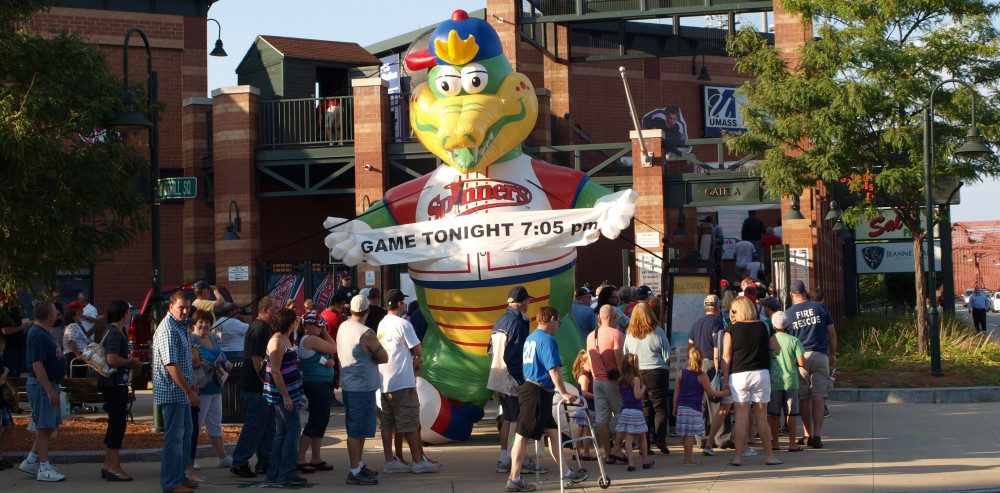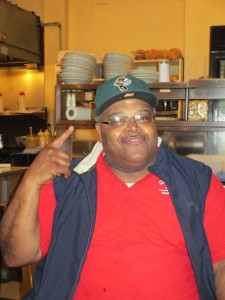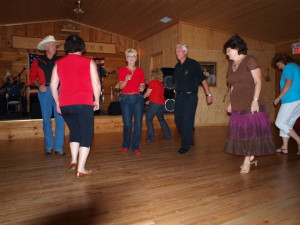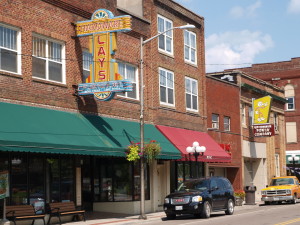Being on the road for several days, or weeks, accidents or illness or both are bound to happen to even the most careful of travelers. And our baseball trips have been no different. In fact, you might even say that baseball travel certainly has its own dangers. Baseball parks, depending on where a fan sits, aren’t the safest places to be. If you’re brave enough to sit outside of the netting, you open yourself up to foul balls and the occasional flying bat (and we don’t mean the blood-sucking, hair-tangling type). Even sitting behind the net doesn’t always keep you safe.
In our years of attending baseball games, we have seen our fair share of injuries in the crowd by flying debris from the field. We’ve even been the victims once or twice. The most memorable was during a Cincinnati game (one of the very few major league games we’ve attended as a married couple). This was in 1994; Marge Schott was the owner and Deion Sanders, Barry Larkin, Reggie Sanders were all players and the team was coached by Davey Johnson. Dan’s brother, an attorney in Cincinnati, had given us tickets to the game for which we were very grateful. We have both been Reds’ fans since childhood, as Cincinnati is our hometown. On top of that, the seats were in the fourth row behind the dugout on the first base side—a mere three rows from Marge Schott herself.
We were in heaven! Until the fifth inning, when Deion Sanders hit a foul ball straight above us. It came careening down out of the sky. Ginny ducked under her scorecard, as if that would effectively protect her, and of course, Dan stretched out his arms as far as he could reach above his head, intending to catch the ball. The friendly couple sitting next to us who we had been chatting with, reacted in the same manner. She ducked down next to Ginny, while Ginny tried to cover her as well with the skimpy scorebook and he jumped up, reaching for the stars, as well. And he was actually the lucky one. The ball hurtled down right to Dan—right onto his middle finger and bounced to the seats behind us. In the process, the ball had hit Dan’s finger so badly that it swelled to the size of one of the famous Kahn’s brats sold at the concession stands. Afterwards, we discovered that on the back of the ticket was a disclaimer by the Reds organization that they were not responsible for any injuries incurred during a game. So Dan attempted to get Marge Schott to sign the back of his ticket just as a reinforcement of that rule. He thought it would be funny. In the end, all that Dan got was a trip to the emergency room—but AFTER the game. He certainly wouldn’t go during. The park emergency staff did get him a bag of ice to take down the swelling, but it was little comfort, considering that he didn’t even get to keep the offending ball.
Another danger to watch for on the road is food poisoning. We don’t like to think of such things spoiling our vacations, but these things happen, so be prepared. This has actually happened to Ginny. Actually, we suspect that it wasn’t poisoning per se; it may have been something she was allergic to. Either way, it was certainly unpleasant. But like a trouper, she didn’t let it interfere with her baseball. We were actually in San Juan Capistrano where we visited the mission then went to a very nice restaurant for lunch, so nice that it cost us $75 for two salads, an iced tea and a Coke. Given, Ginny’s salad had salmon and Dan’s had steak, but still…$75?!
Ginny didn’t quite finish hers and Dan had the remaining salmon. We then made a stop at an antiques shop before heading out to Lake Elsinore for the ball game. While in the shop, Ginny began to feel not quite right and on the trip to Lake Elsinore, things just got steadily worse. After getting to our hotel (which was the PITS in every sense of the word), Dan wanted to let her stay in bed and cancel going to the game. Actually, we should say Dan OFFERED to not go to the game. There’s no way he would WANT to not go. And, of course, the same goes for Ginny. She was determined to get there. She wasn’t coming all the way to California just to miss a ball game. She made it through the first three innings before having to run to the bathroom. And there she decided that we needed one more criterion by which to judge a ball park—barfability. How clean is a bathroom? Would you be willing to barf there? Luckily, the women’s bathroom at the Lake Elsinore Storms stadium was exceptionally clean and well prepared for such an emergency. After her epiphany, she returned to her seat and having relinquished the scorekeeping duties to Dan, she managed to use mind over matter to allow herself to stay until the end of the game. Talk about a trouper. A lesser woman, or even man, would have taken the car and gone back to the hotel where she could’ve suffered in a not-so-comfy bed. Not Ginny. She toughed it out for nine innings. Then, of course, she was sick all night at the hotel. However, by morning, she was much better; in fact, the following night we were at the High Desert Mavericks stadium and she was again eating park food (sometimes a dangerous adventure by itself). Because she slept through the two-hour ride, we missed seeing the Roy Rogers museum, which is no longer. She lives with the regret to this day.
Sun burns, laryngitis, colds, allergic reactions, sprained ankles—all these ailments have plagued us on trips, but we don’t stop. Well, we actually do stop: at CVS, Walgreen’s, K-Mart, Walmart, Sams, the local grocery store and, very occasionally, the urgent care facility. One year, we had to travel with Dan’s leg in a removable big black boot (used instead of a cast) because he had broken his leg just above the ankle. The mishap happened before we left on our baseball trip, but it was no less traumatic. And it was during one of the hottest years on record in Texas and Oklahoma. But he survived. And didn’t ever think of NOT going to baseball. The same thing happened to Ginny two years later, but not in the same way. She broke her foot missing the last step on the stairs and ended up in a boot as well. This time, though, we went to the west coast of Florida. It was quite warm, but not nearly as bad as Texas. The problem here was the rain, which would not stop. So she lived in fear of slipping on the wet ground. But, again, we never thought of NOT going!
So the moral of the story, as the cliché goes, hope for the best and be prepared for the worst. You never know what disasters await you. But think of the wonderful time you’ll have before and after. Baseball makes all things better.



